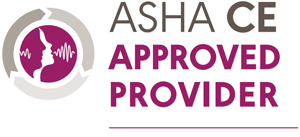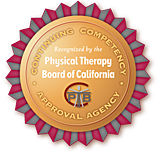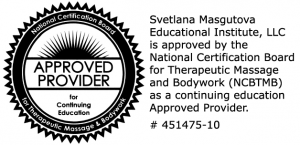


Event Registration

Educational Institute LLC
2.4 ASHA CEUs



Anatomy, Neuroanatomy, and Neurophysiology Basis for MNRI®
A hard copy of the manual will be provided.
Dates: July 30 - August 1, 2019
Location: Lakewood, NJ
Address: Estreia, 978 River Avenue, Lakewood, NJ 08701
Instructor: Dr. Svetlana Masgutova
CEUs: This course is offered for ASHA CEUs
(Introductory level, Professional area)
This course is offered for AOTA CEUs / Contact Hours
(Introductory; Occupational Therapy Process: Evaluation, Intervention)
CE Hours: This course is offered for 24 NCBTMB CE Hours
- MNRI® Dynamic and Postural Reflex Integration
The Masgutova Method® is a set of programs focused on the restoration and maturation of primary movements, reflexes, coordination systems, skills for optimal performance of natural mechanisms, developmental processes, brain functioning, and sensory-motor integration. You can read more about Reflexes and MNRI HERE.
Watch an overview of how MNRI works
The Mission of the Svetlana Masgutova Educational Institute (SMEI) is to provide health, wellness and educational professionals, parents, and caregivers with non-invasive techniques to address maturational, developmental, and life challenges.
Course Overview
This 24-hour class will give a brief introduction on how anatomy and neurophysiology knowledge is used in the Masgutova Method® programs aimed at effects the functioning of the neurosensorimotor reflex integration used. It also shows the structure of this traditional knowledge in unique application to reflex integration concept.
Learning Objectives: Anatomy and Neurophysiology Basis for MNRI®
- Describe the structure of gross human anatomy including the following areas of the body: trunk, upper and lower limbs, head and their sub-areas.
- Explain the definition of Osteology as the science of bones and their structure and functions.
- Explain how the following functions within neurosensorimotor reflex integration:
- Skeletal system: Trunk bones, spine, vertebrae (neck, thorax, lumbar parts), sacrum, coccyx
- Thorax system: ribs, sternum
- Skull: occipital, parietal, frontal, sphenoidal, temporal, ethmoid bones
- Describe the following as part of the upper body Osteology system to support the Masgutova Method:
- Facial skull: nasal, lacrimal, vomer, maxilla, mandible, palatine, cheekbone
- Skull sutures
- Upper limb bones: scapula, clavicular, humeral, elbow bone
- Wrist bones, fingers bones
- Describe the following as part of the lower body Osteology system to support the Masgutova Method:
- Pelvic, os ilium, os ischii, os pubis
- Lower limb bones: femoral, shin, patella
- Foot bones
- Explain the Osteology system and its development in utero and infancy with the following:
- Newborn skull
- Embryologic, developmental including age features of bone development
- Explain Arthrology as the science of joints and links of segments of the body and its support for neurosensorimotor reflex integration.
- Describe the types of joints in the Arthrology systems and their functions in movement system
- Explain how ligaments in human body and Ligament Guard Response effect neurosensorimotor reflex integration.
- Explain skeletal trunk connections, spinal connections and spinal connections biomechanics and movements for postural control.
- Explain the Atlante vertebra's biomechanics and movements and its connections and the functions of the spine.
- Explain the Thorax connections, rib cage biomechanics and movements as it relates to their role in breathing reflexes functions.
- Explain the upper limb connections, biomechanics and movements and their effect on the sternoclavicular joint, acromioclavicular joint, shoulder joint, elbow joint, and wrist joints.
- Explain the Lower limb connections, biomechanics and movements and their effect on the pelvic connections, sacoiliac joint, coxofemoral joint, knee joint, and foot joints.
- Describe how the Atlante vertebra affects embryologic, and development of joints and motor development.
- Explain Myology as the science of muscle, fascia, tendons fibers and descending pathways of a reflex circuit.
- Explain how Myology effects embryologic development of joints and motor development.
- Explain how the following are used during reflex integration:
- Muscles of trunk
- Back muscles
- Spine muscles
- Fascia of back muscles
- Thorax muscles: superficial, deep muscles
- Diaphragm
- Belly muscles
- Neck muscles
- Upper limb muscles
- Lower limb muscles
- Describe how the neuroanatomy of the following effect MNRI reflex arch:
- Spine: External structure
- Grey and white matter
- Brain: cerebrum, diencephalon, mesencephalon, rhombencephalon, medulla, cerebellum.
- Main pathways of brain and spine: Ascending (lat. ascendance), Descending (lat. descendants) pathways
- Cranial nerves: I – XII
- Spinal nerves
- Neuroanatomy maturation equality for reflex circuit development
- Embryologic, developmental /age features of joints and motor development.
- Explain the physiology behind neurosensorimotor reflex integration including:
- Electrophysiology and the reflex circuit
- Synapse physiology and the reflex circuit
- Muscles physiology and the reflex circuit
- Motion physiology and the reflex circuit
- Describe the Neurophysiology of the Masgutova Method including:
- General CNS physiology (neuron, reflex arc and circuit, coordination of CNS functions)
- Physiology of autonomic nervous system (hypothalamus, vegetative system)
- Sensory physiology (psychology of perception, general sensory physiology) and reflex circuit
- Explain how superficial, proprioceptive, interoceptive sensitivity affects pain, protective reflexes and reflex circuits.
- Explain the physiology of higher mental functions including behavior, cortex, brain activation, emotions, cognitive functions, executive functions, and conscious and unconscious decision making.
- Analyze the role of reflex circuit/s in the development of higher mental functions.
Course Agenda:
Day 1
Hour 1: Movement as basis of Natural
Hour 2: Gross Human Anatomy
Hour 3: Skeletal system, thorax system, and Skull functions within the neurosensorimotor reflex system
Lunch 1 hour
Hour 4: Upper Osteology system to support the Masgutova Method
Hour 5: Lower Body Osteology system to support the Masgutova Method
Hour 6: Osteology system and development in utero and infancy
Hours 7-8: Arthrology
Day 2
Hour 1: Ligament Guard Response
Hour 2: Skeletal connections
Hour 3: Atlas vertebrae biomechanics
Hour 4: Thorax connections
Lunch 1 hour
Hour 5: Upper Limb Connections
Hour 6: Atlas vertebrae
Hours 7-8: Myology
Day 3
Hour 1: Areas used during reflex integration
Hours 2-3: Neuroanatomy and the reflex arch
Hour 4: Physiology behind MNRI
Lunch 1 hour
Hours 5-6: Neurophysiology of MNRI
Hours 7-8: Physiology of higher mental functions
Estreia, 945 River Avenue, Lakewood, NJ 08701
Target Audience:
Speech Language Pathologists, Speech Language Pathologist Assistants, Occupational Therapists, Certified Occupational Therapy Assistants, Nurses, Physical Therapists, Physical Therapist Assistants, Educators, Psychologists, Physicians, Massage Therapists, Mental Health Counselors, Other Health Care Providers, Parents.
Criteria for Certificate of Completion and any available Credit Hours or CEUs:
• Full attendance to the entire course
• Participation in practice with instructor feedback
• Post course evaluation
Financial Disclosure: Dr. Svetlana Masgutova receives a stipend based upon an enrollment percentage.
Non-financial Disclosure: Dr. Svetlana Masgutova is co-owner of SMEI, however, she receives no profit from this ownership status. Income is only derived from her work at Courses, Family Conferences, Clinics and Administrative Duties.
Course Disclosure: The Svetlana Masgutova Educational Institute has developed and patented a licensed technology trademarked as MNRI®. Because there are no other like-kind methods available, course offerings will only cover information that pertains to the effective and safe use of the above-named Method. This presentation will focus exclusively on MNRI® and will not include information on other similar or related methods or services.
Special Needs Requests: If you require special accommodations, please notify SMEI at events@masgutovamethod.com at the time of registration so that needed accommodations can be made prior to the course.
SMEI Cancellation and Refund Policy
Courses are subject to cancellation due to lack of minimum required participants registered for the course within 10 days of the course start date. Full refunds (or transfer of funds to online account for future use) will be issued if the course is canceled due to the low number of attendees.
We recommend that attendees who will be flying do not purchase their flight until after the 10 day window has elapsed to avoid a nonrefundable circumstance with the airline. SMEI is not liable for any ticket costs related to the course being canceled. SMEI is not liable for any costs related to transportation (airline tickets, train, taxi, etc) due to the cancellation of an event.
- Participants will receive a full refund for registration cancellation up to 21 days prior to the course.
- A 10% administration charge will be retained for cancellations within 15-20 days prior to the course.
- A 25% administration charge will be retained for cancellations within 14 days prior to the course.
Manual Download Policy
Once a student has downloaded the manual or any course resources, payment for this course can be transferred to a different time and location of the same course; however NO REFUNDS and NO TRANSFERS TO A DIFFERENT COURSE are allowed, even if the course is cancelled by the LAC or Instructor.
Transferring Policy
Participants who wish to transfer registration and payment to another
SMEI course may do so.
*Participant must have selected the course they wish to transfer to at the time of the request. All refunds will be held until the transfer course has been selected.
* A 2.5% transaction fee (processing fee) will be withheld on all refunds that were processed using credit card/PayPal. If a participant wishes the refund to be paid directly to their account via credit card/PayPal, PayPal may also charge the participant an additional 2.5% transaction fee (processing fee). Refund by check is available upon request. For questions contact us.

